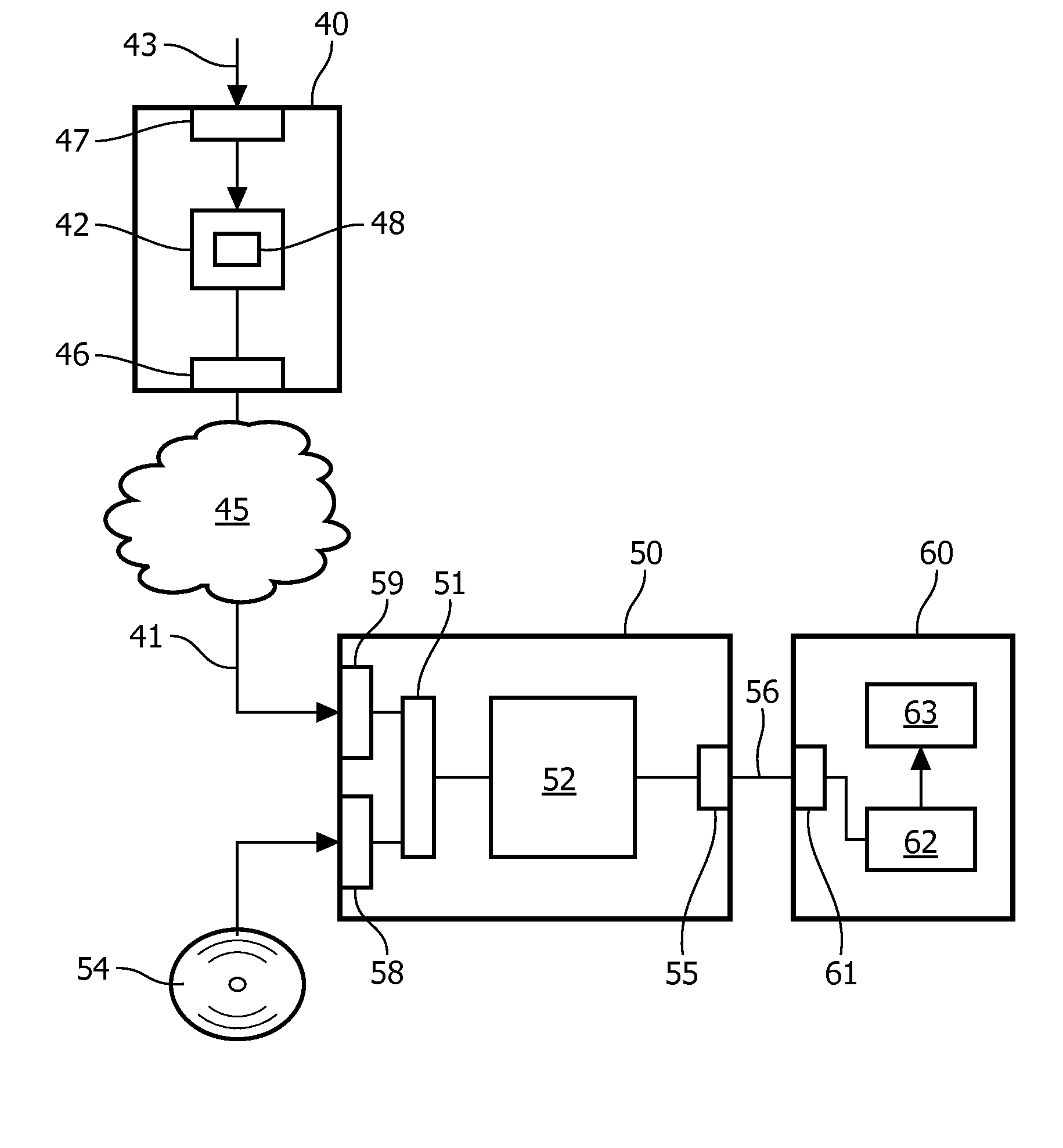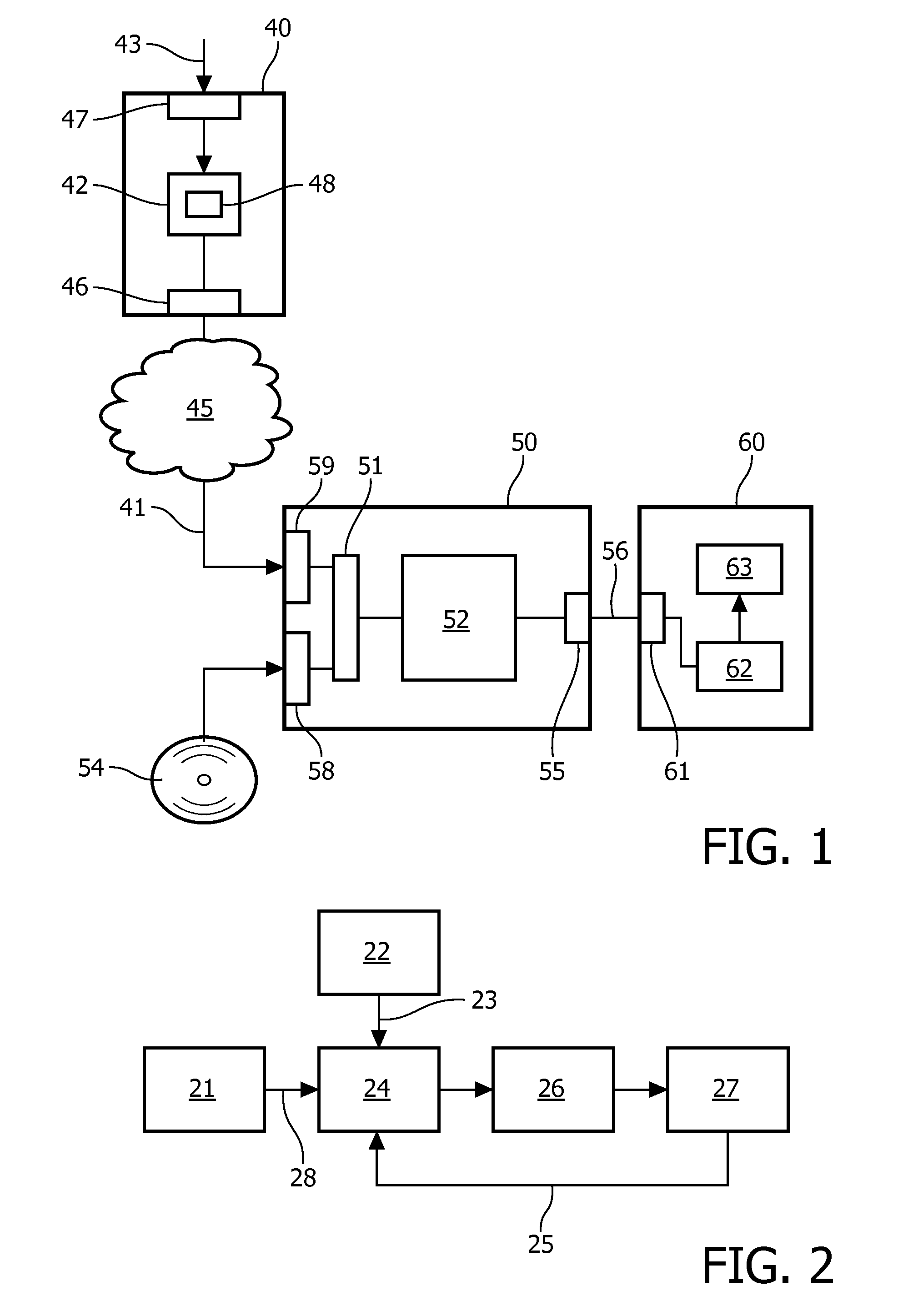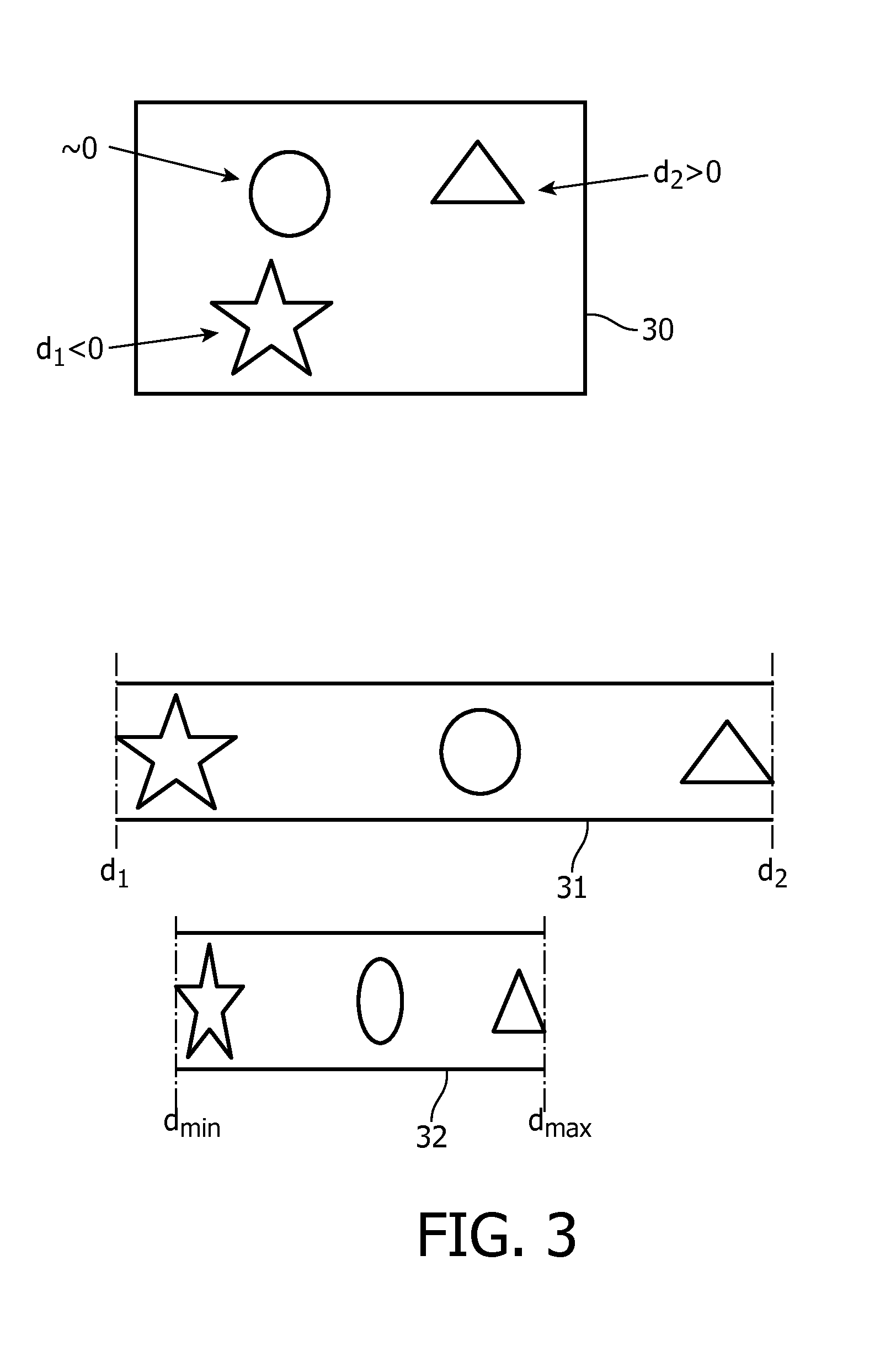Saliency based disparity mapping
- Summary
- Abstract
- Description
- Claims
- Application Information
AI Technical Summary
Benefits of technology
Problems solved by technology
Method used
Image
Examples
Embodiment Construction
[0033]It is noted that the current invention may be used for any type of 3D image data, either still picture or moving video. The system processes a depth map provided in the 3D image data. The depth map may be either originally present at the input of the system, or may be generated as described below, e.g. from left / right frames in a stereo (L+R) video signal or from 2D video. 3D image data is assumed to be available as electronic, digitally encoded, data. The current invention relates to such image data and manipulates the image data in the digital domain.
[0034]There are many different ways in which 3D video data may be formatted and transferred, called a 3D video format. Some formats are based on using a 2D channel to also carry stereo information. For example the left and right view can be interlaced or can be placed side by side and above and under. Alternatively a 2D image and a depth map may be transferred, and possibly further 3D data like occlusion or transparency data. An...
PUM
 Login to View More
Login to View More Abstract
Description
Claims
Application Information
 Login to View More
Login to View More - R&D
- Intellectual Property
- Life Sciences
- Materials
- Tech Scout
- Unparalleled Data Quality
- Higher Quality Content
- 60% Fewer Hallucinations
Browse by: Latest US Patents, China's latest patents, Technical Efficacy Thesaurus, Application Domain, Technology Topic, Popular Technical Reports.
© 2025 PatSnap. All rights reserved.Legal|Privacy policy|Modern Slavery Act Transparency Statement|Sitemap|About US| Contact US: help@patsnap.com



